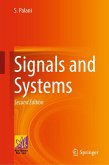This book is intended to be a little different from other books in its coverage. There are a great many digital signal processing (DSP) books and signals and systems books on the market. Since most undergraduate courses begin with signals and systems and then move on in later years to DSP, I felt a need to combine the two into one book that was concise yet not too overburdening. This means that students need only purchase one book instead of two and at the same time see the flow of knowledge from one subject into the next. Like the rudiments of music, it starts at the very beginning with some elementary knowledge and builds on it chapter by chapter to advanced work by chapter 15. I have been teaching now for 38 years and always think it necessary to credit the pioneers of the subjects we teach and ask the question "How did we get to this present stage in technological achievement"? Therefore, in Chapter 1 I have given a concise history trying to not sway too much away from the subject area. This is followed by the rudimentary theory in increasing complexity. It has already been taught successfully to a class at Auckland University of Technology New Zealand.
Dieser Download kann aus rechtlichen Gründen nur mit Rechnungsadresse in A, B, BG, CY, CZ, D, DK, EW, E, FIN, F, GR, HR, H, IRL, I, LT, L, LR, M, NL, PL, P, R, S, SLO, SK ausgeliefert werden.









